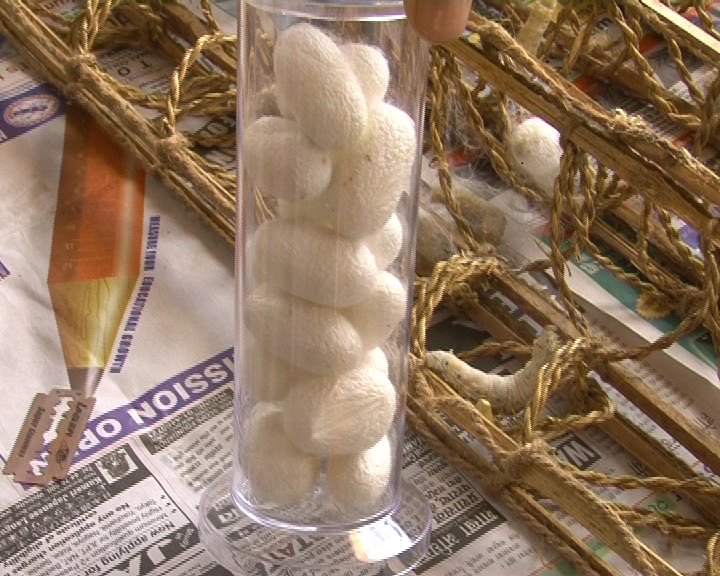Unlike draping yourself in velvet, which is not socially acceptable, silk remains perfectly fashionable. In fact, it is all the rage at the Massachusetts Institute of Technology and Tufts University, where a research group led by David Kaplan is literally wrapping silk around everything it can get its hands on. In 2012, I reported on a technological breakthrough from Dr. Kaplan's lab for The Economist. Dr. Kaplan's team used a chemical technique to extract a particular protein called fibroin out of silkworm cocoons. Then, they mixed vaccines and antibiotics with this silk protein, which greatly extended their shelf-lives. This innovation is particularly important for developing countries, many of which do not have access to the electricity or proper refrigeration required to keep medicine usable. That was four years ago. In a flurry of papers published just this month, Dr. Kaplan has greatly expanded the repertoire of biomolecules able to be preserved in silk. In PNAS, his team showed that protein biomarkers (useful for medical diagnostics) in blood samples can be preserved in silk. In the journal ACS Applied Materials & Interfaces, they demonstrated that silk can preserve antioxidants. Furthermore, in the Journal of Controlled Release, Dr. Kaplan's team claims that silk can also preserve cells, antibodies, and peptides. Silk can even be used to preserve food, such as strawberries and bananas. Earlier this week, ACSH's Ruth Kava reported on research from their lab that showed that wrapping fruit in thin films of silk fibroin delays spoilage. (And the best part: Fibroin is edible!) So, what can't be preserved in silk? In an interview with ACSH, Dr. Kaplan wrote that certain enzymes cannot be preserved using their technique. The reasons are unclear. But rest assured, if enzymes can be preserved in silk, it will be Dr. Kaplan's team that will discover how.
What Can't Be Preserved in Silk?
Unlike draping yourself in velvet, which is not socially acceptable, silk remains perfectly fashionable. In fact, it is all the rage at the Massachusetts Institute of Technology and Tufts University, where a research group led by David Kaplan is literally wrapping silk around everything it can get its hands on.




